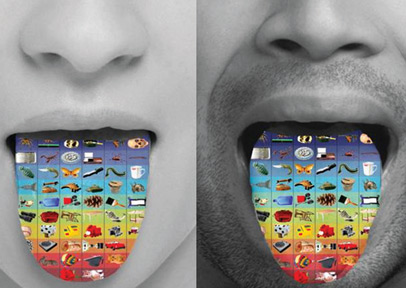New research throws light on subjective feeling
Whenever we perceive something, we make an instant judgement on
whether what we see, hear, taste, smell or feel is positive or negative.
This subjective colouring of our perceptions is such a pervasive aspect
of human experience that we are almost unable to sense anything without
automatically valuing it according to its pleasantness or
unpleasantness.
Taking in the world this way means that even when we observe the same
object or situation, we each form a unique and personal impression of
it. Compared to other aspects of perception, the dimension of individual
feeling is far less well understood.
Adam Anderson, associate professor at Cornell University, has led a
research group focusing on the way in which subjective evaluation of the
outside world shows up in the brain. The results suggest that not only
is there a common pathway that deals with this type of emotional
response across the various physical senses, but that it works the same
way for all of us.
|

The study examined subjective perception of visual and
gustatory stimuli |
"Despite how personal our feelings feel, the evidence suggests our
brains use a standard code to speak the same emotional language," says
Anderson.
Together with researchers, Anderson discovered that an individual's
subjective feeling is represented by fine-grained patterns of neural
activity within the orbitofrontal cortex, an area of the brain
associated with emotional processing.
"If you and I derive similar pleasure from sipping a fine wine or
watching the sun set, our results suggest it is because we share similar
fine-grained patterns of activity in the orbitofrontal cortex".
Anderson's findings show that the human brain generates a code for
the whole spectrum of feelings ranging from pleasant to unpleasant. This
code can be read as a "neural valence meter", with certain groups of
neurons leaning in one direction when the emotion is a positive one, and
in the opposite direction when an unpleasant feeling arises. This means
that the popular theory that the experience of 'good' and 'bad' feelings
corresponds with activity in distinct parts of the brain, seems to have
been disproved.
According to Anderson, our personal feelings are the last frontier of
neuroscience. To venture into this relatively unchartered territory, he
asked the participants in his study to rate a series of complex images
and tastes, whilst observing the patterns of activity which arose in
their brains. As well as identifying the sensory-independent emotional
codes in the orbitofrontal cortex, the researchers found that distinct
sensory-specific emotional areas were involved for vision and taste.
The authors indicate that this combined pattern of activity
demonstrates that our subjective emotional response is an integral and
inseparable aspect of human perception.
-The Independent |

